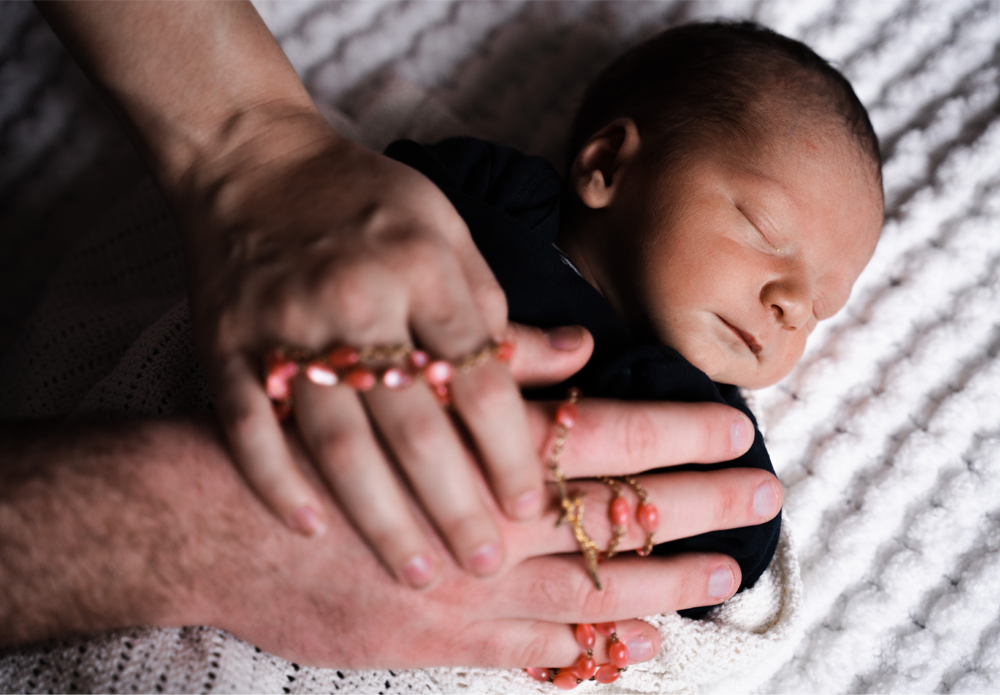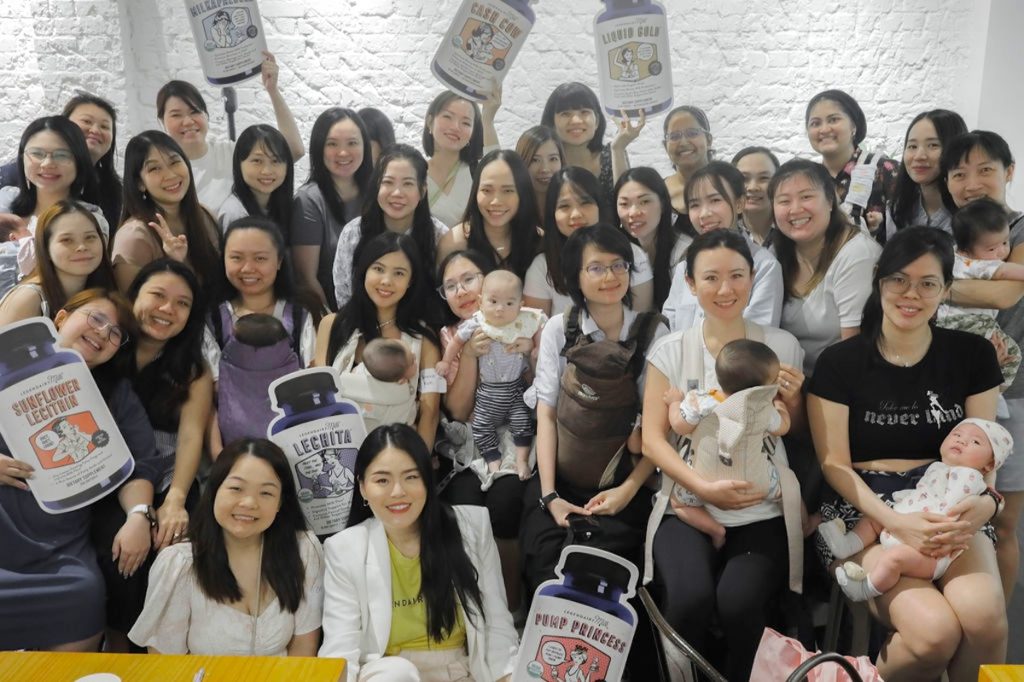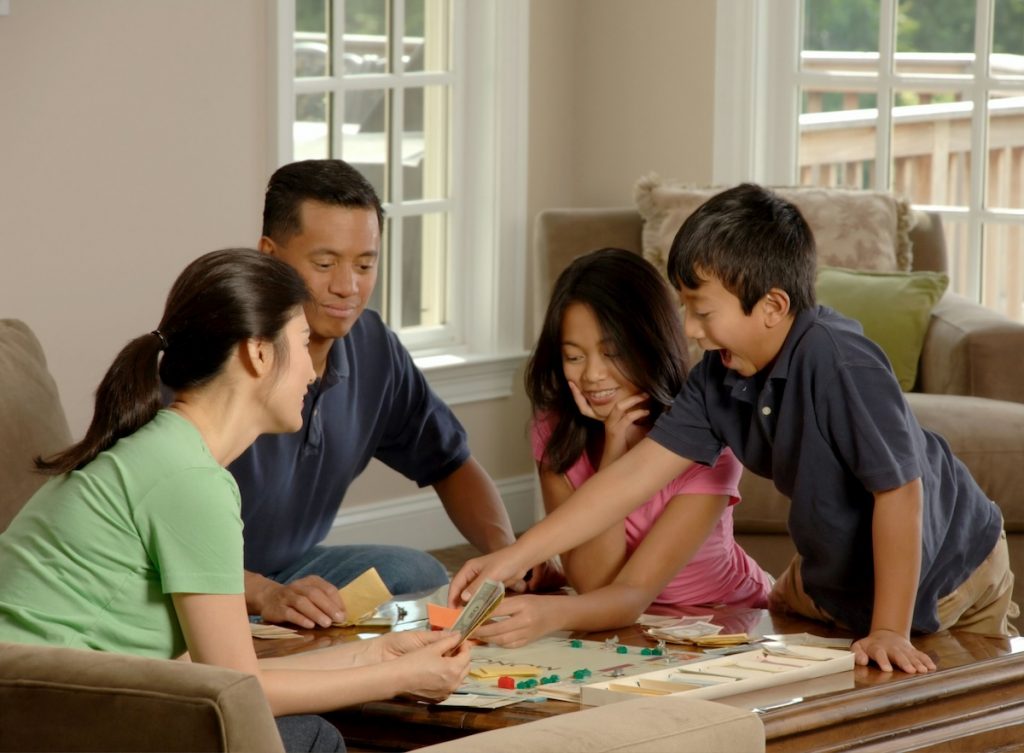Learn how to care for your newborn by paying attention to their body language and verbal cues.
Paying attention to your baby’s cues – both verbal and non-verbal, can help you understand exactly what your newborn needs. For example, his/her cries can mean he/she needs to be fed, changed or is ready to sleep. Additionally, we’ve also included tips on umbilical cord care, bathing your baby and taking care of your newborn when he/she is sick.
Bathing
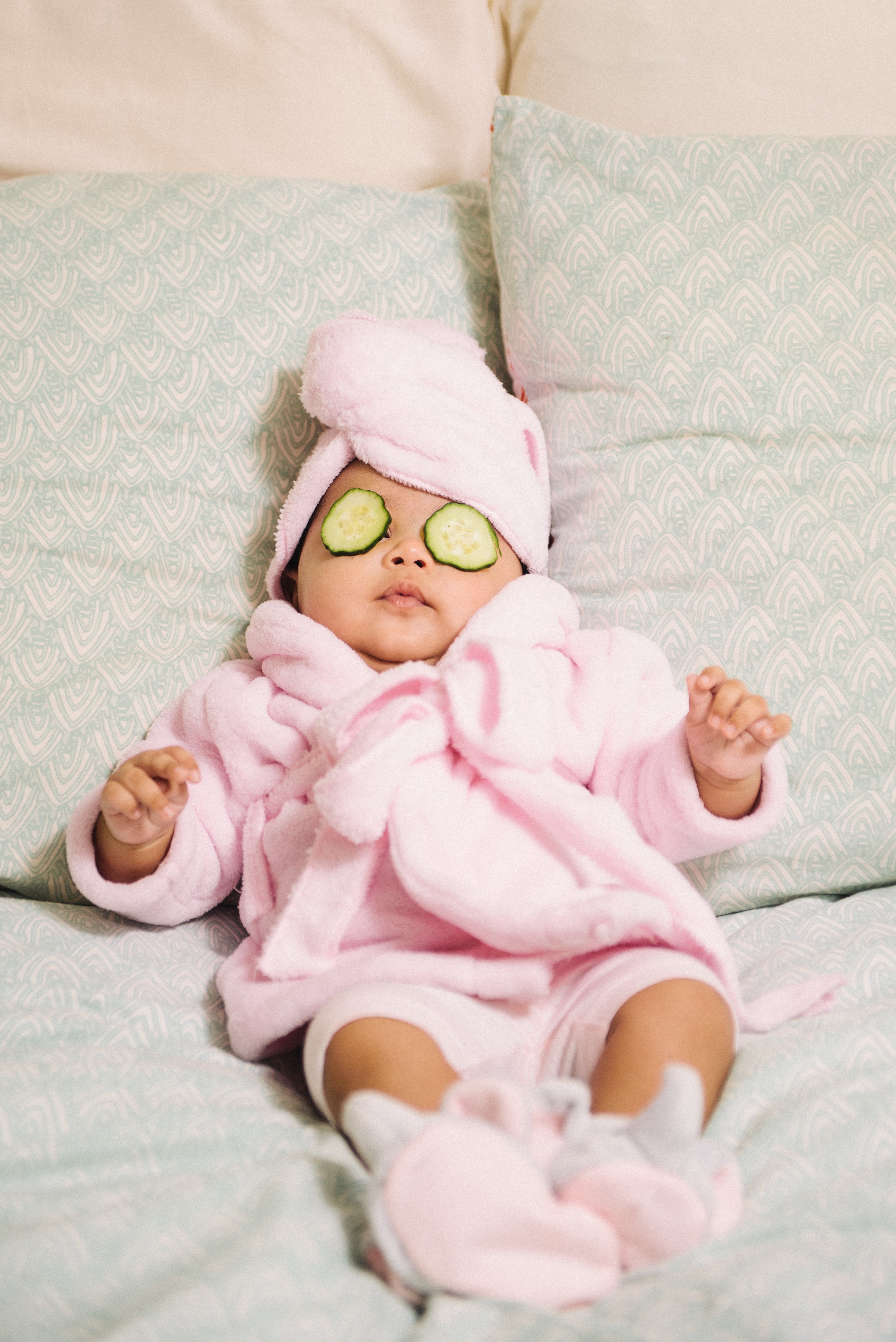
Newborns
Start with a sponge bath two or three twice a week, until his/her umbilical cord stump heals, then you can graduate to a baby tub bath, and a tub bath when your baby can sit up on his/her own. When starting out, you could bathe your newborn in a plastic bath or the kitchen sink, or even shower with him/her. Just make sure your baby’s face is away from the pouring water, and use warm water.
Ensure you have everything you need within reach. This could include a towel, washcloth, lotion, clean diaper and clothes. For sponge baths, first, undress your baby and wrap him/her in a towel, and then lay him/her down on his/her back. Only expose the particular parts of your baby’s body that you’re currently washing so your baby is warm. Next, wet the washcloth, and after wringing out the water, wipe your baby’s face. Make sure to wipe the eyelids from the inside to outside corners. Continue with the rest of your baby’s body. Ensure you clean the underarms, behind the ears, around the neck and the diaper area, and between the fingers and toes.
Infants
As your newborn grows, you can use a bathtub, preferably at a height where you can comfortably hold your baby, like a kitchen table, or get a bath stand like Stokke Flexi Bath Stand. Fill up the bathtub with about 5cm of water, preferably about 37- 38 °C to keep your baby warm. Next, take off any accessories like watches or jewellery and wash your hands. When bathing your baby, take off his/her diaper last, and then cradle your baby’s head with one arm and support his/her head and neck with the other. Now, lower your baby into the bath, feet first, and lay your baby down in the bath, submerging the back of your baby’s head. Be sure to clean your baby’s body creases thoroughly to get rid of any bits of poo or vomit.
Once clean, lift your baby out of the bath, remembering to support his/her head and neck, and then place your baby on his/her back on a clean, dry, soft towel. Wrap your baby in the towel and pat dry, especially in the skin creases. Additionally, you may need to apply a mild lotion if your baby’s skin is dry or he/she has nappy rash. Next, dress your baby, with a diaper on first. After placing your baby in a cot, you can empty the bath water.
Bringing Baby Out
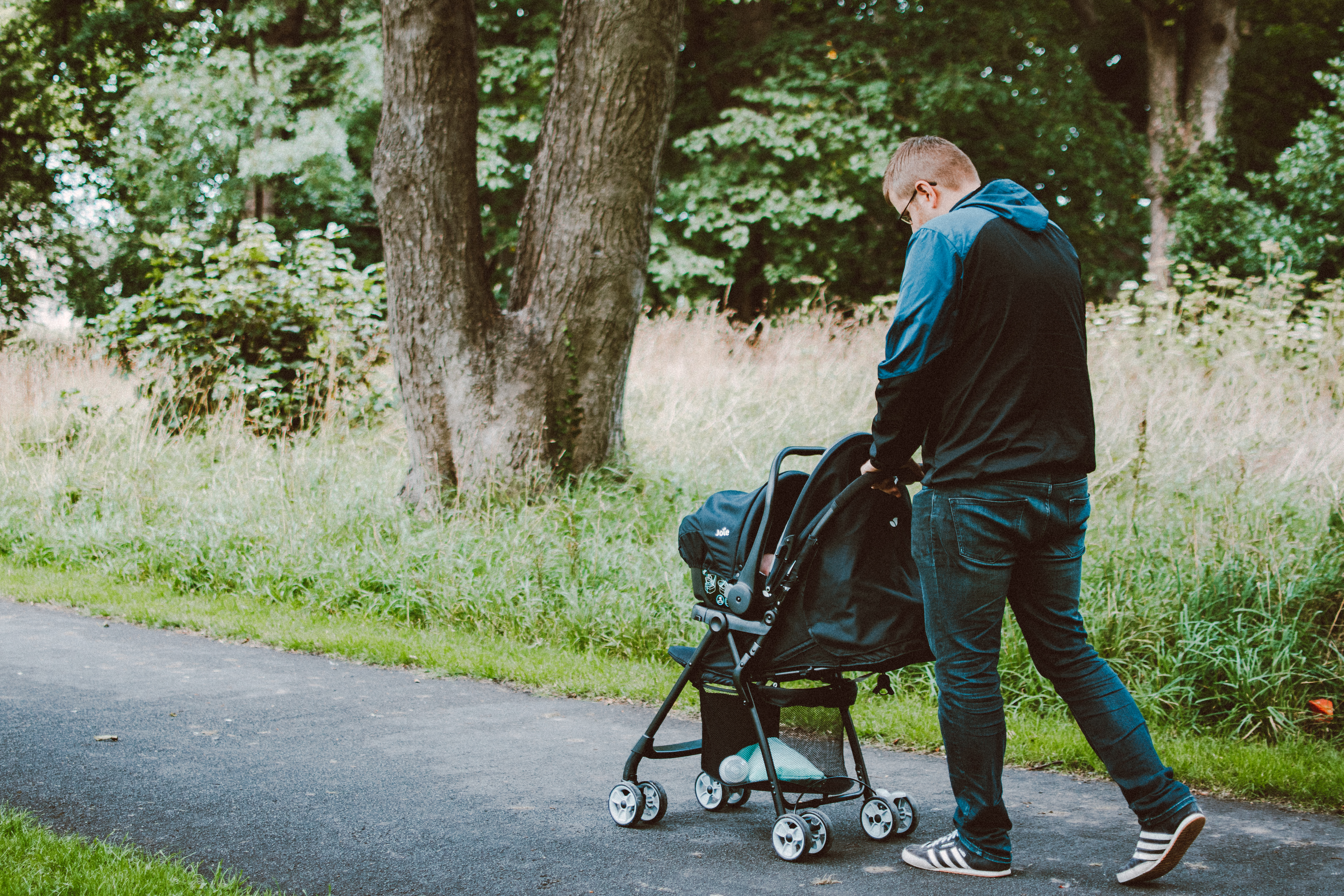
Under regular circumstances, you should be able to bring your newborn out right away as long as you are feeling up to it. However, with COVID-19, it’s best to err on the side of caution and keep your baby and yourself at home as much as possible. While your newborn does have some immunity, he/she may get sick easily still. If you do go out, follow the current guidelines, which means you can meet three friends, or have five visitors in your home.
When you do go out with your baby, dress your newborn slightly warmer than you’d dress yourself. For example, dress your baby in a long-sleeved romper if you’re wearing a short-sleeved t-shirt. Shield your baby from the sun and mosquitoes with the stroller’s sunshade and mosquito net. Also, avoid letting strangers hold your newborn, and observe good hygiene at all times. When you get home, be sure to wash your newborn’s – and your – hands, or bathe your newborn if you prefer.
Burping
Burp your baby by repeatedly gently patting your baby’s back – use a cupped hand rather than a flat palm. Of course, you’ll want to prepare a towel or bib to place under your baby’s chin or your shoulder. Try a few positions for burping, such as sitting upright and holding your baby against your chest. Rest your baby’s chin on your shoulder and support your baby with one hand. Gently pat your baby’s back with the other hand. Another position is to hold your baby sitting up, cradling your baby’s chin in the palm of your hand, and patting your baby’s back. A third option is to lay your baby on your lap on his/her belly. Ensure your baby’s head is higher than his/her chest and gently pat your baby’s back.
Burp your baby each time you switch breasts if you breastfeed, or every 60 to 90 ml if bottle feeding. Otherwise, if your baby tends to be gassy, spits a lot, has gastroesophageal reflux disease, or seems fussy during feeding, try burping your baby every five minutes. However, if your baby doesn’t burp after a few minutes, you may need to change his/her position and try burping for another few minutes. Keep your baby upright after feeding him/her for 10 to 15 minutes, or longer if your baby spits up.
Carrying Your Baby
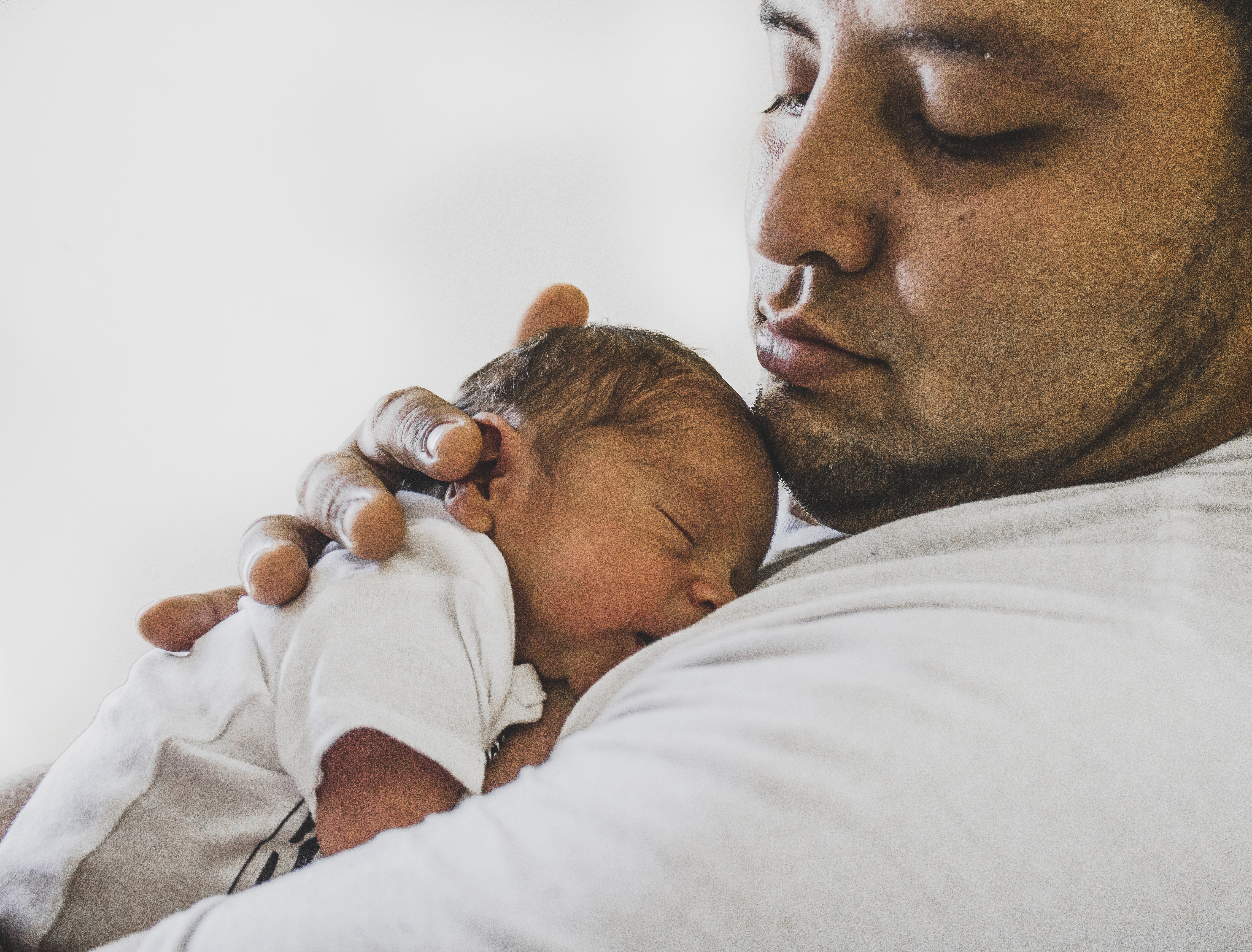
Before you pick up your baby, ensure you wash your hands, to reduce passing on any germs you carry to your newborn. Aside from lathering with soap and warm water, have hand sanitiser handy for any guests who want to hold your little one. Next, always support the head and neck at least until they’re four months old, since your newborns don’t have the neck muscle control to support their heads on their own. There are a variety of holds that you can try, such as the cradle, shoulder, belly and lap holds.
Different Holds
First, the cradle hold is where your baby is horizontal at your chest level, and you support his/her neck. Next, gently nudge your baby’s head into the crook of your elbow, and move your hand to their bottom. This leaves your other hand free to do other things or provide additional support.
As for the shoulder hold, your baby’s body will be parallel to your own and his/her head to shoulder height. While one hand supports his/her head and neck, the other should support your baby’s bottom. For the shoulder hold, his/her head will be shoulder height and your baby’s body parallel to your own. Support his/her head and neck, and bottom. Otherwise, try the belly hold, which is great for burping your baby as well. Your baby should be across your forearm, with his/her head up toward your elbow, and his/her head on either side of your hand. This can be at a slight angle, and stroking your baby’s back should help expel the gas. Lastly, the lap hold is where your baby’s head is at your knees, facing up, with your hands supporting his/her head, and your forearms under his/her body. Tuck your baby’s feet in at your waist.
Changing Your Baby's Diaper
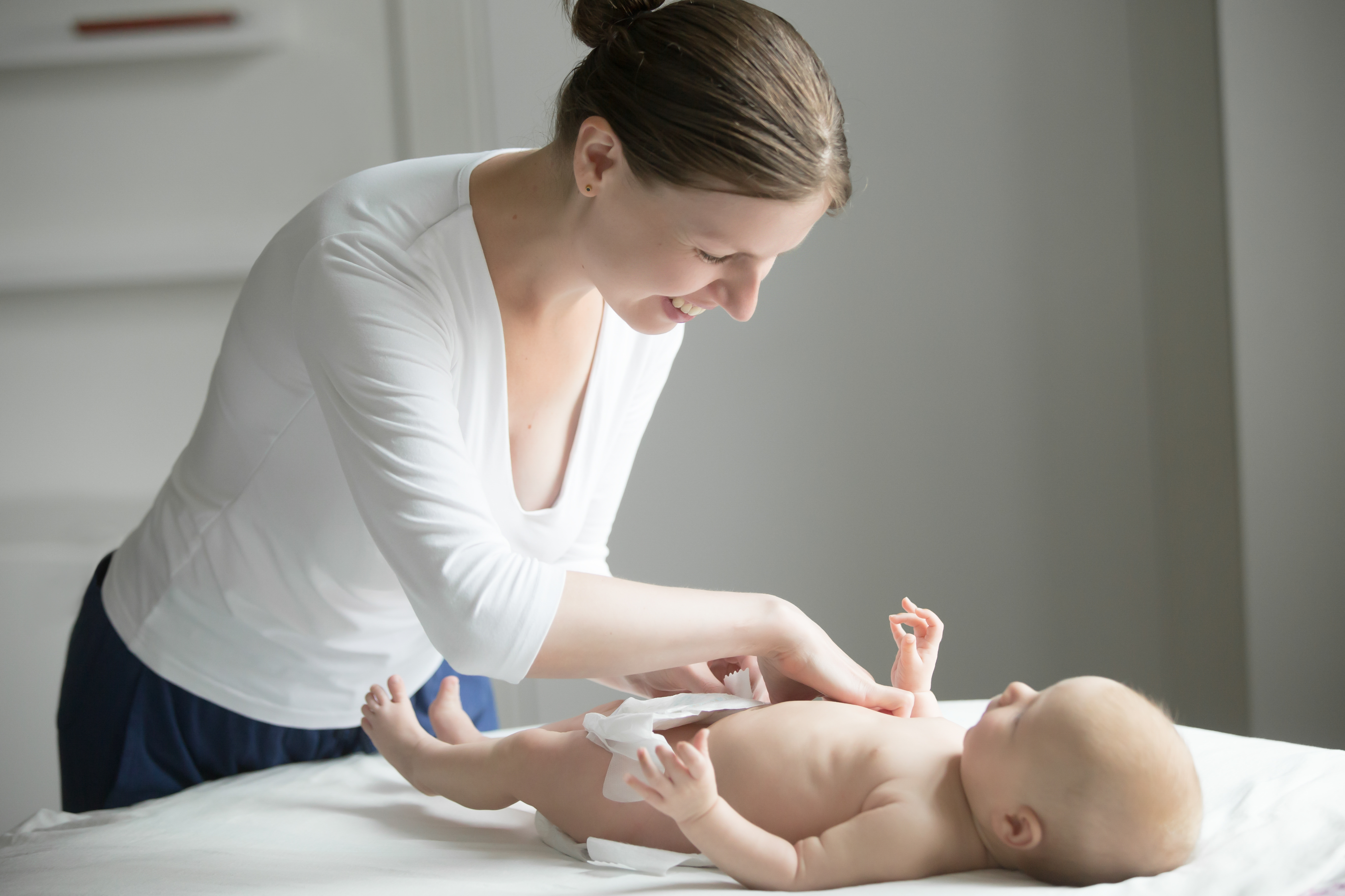
Frequently changing your baby’s diaper can help prevent irritation and diaper rash. You can tell if your baby has pooped by his/her facial expressions, such as grimacing and grunting, and of course, by the smell. With disposable diapers, you can tell your baby has peed with the colour-changing stripe, and a cloth diaper should be wet to the touch. When newborns are sleeping, you don’t have to wake them for diaper changes unless they’re very wet or uncomfortable or if they have pooped. The same rule of thumb goes for nighttime feedings, so your baby can sleep longer.
Changing Essentials
Before changing your baby, ensure you have the following with you. These will include clean diapers (spares are handy), clean cotton balls, washcloths or wipes, diaper rash creams, a change of clothes for your baby, as well as a toy to distract your baby.
How to Change Your Baby's Diaper
First, place your baby on a clean, soft and safe surface, such as a crib, bed, a dresser with a changing pad or a changing table. Always keep one hand on your baby. Next, open up the diaper. If the diaper is just wet, fold the dirty diaper underneath your newborn and wipe the area. For poopy diapers, wipe with the diaper as much as possible, then fold the diaper beneath your baby. Lift the legs and clean the front with warm water or wipes, getting all the creases, and then clean the bottom thoroughly.
Next, slip the dirty diaper up, and put a fresh one under your baby before releasing his/her legs. Pat your baby dry and then put on the clean diaper or any diaper rash creams. Do fold down the area around your baby’s umbilical cord if it’s still attached and fasten the diaper securely. The tabs should go in the back, under your baby and then wrap to the front. For your daughter, wipe from front to back, so poop doesn’t get into the vaginal area. Meanwhile, your son may pee on you, so cover his penis with a clean diaper or cloth when he’s undressed. Gently clean around the penis and scrotum and point his penis downwards to reduce leaks and soaked shirts.
Now, throw out the dirty diaper. Wrap disposable diapers into a ball, securing with the tab fasteners and then throw it away, not down the toilet. Place the soiled diaper in a plastic bag before disposing of it, or place your cloth diapers in a vinyl bag if you’re out. Otherwise, place the cloth diapers in a bucket with a tight-fitting lid, then dress your baby and wash your hands.
Circumcision
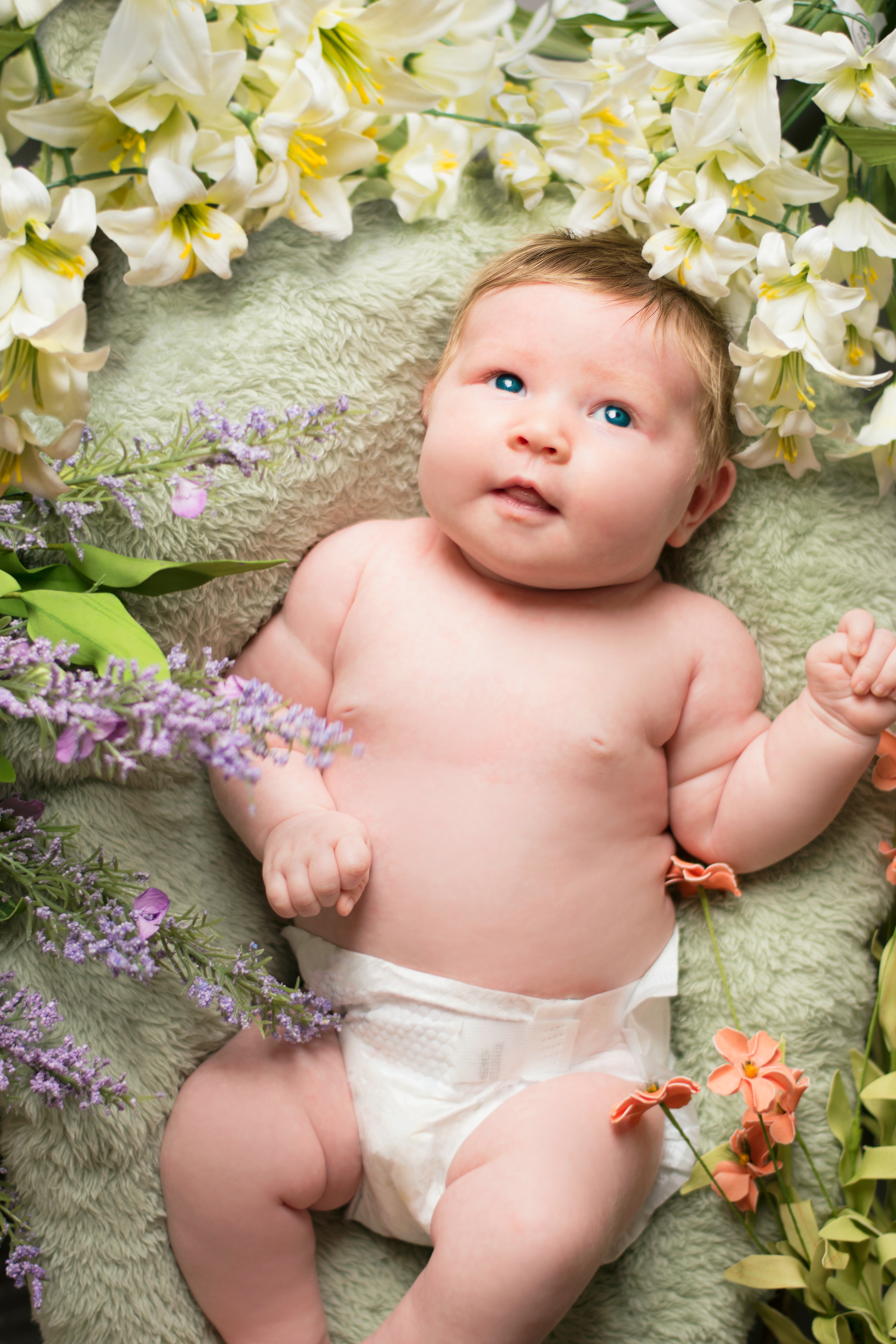
If you’ve circumcised your baby, he may be fussy and irritable afterwards. Experiment with various holds (as above) so there’s no pressure on his genitals. The tip of the penis may be sore, and it may look red and swollen. Additionally, there may be a yellow crust on the tip as well. All these should go away in a few days, and it may take up to 10 days for your son’s penis to completely heal. With each diaper change, change his bandage and dab on petroleum jelly so it doesn’t stick to the diaper. You don’t have to put back the bandage 48 hours after the procedure, but you should still lubricate the penis so it doesn’t stick to the diaper. Gently wipe away any stool with warm soapy water and change his diaper often and fasten it a little looser.
Contact your baby’s paediatrician if your baby doesn’t pee within 12 hours of the procedure, or if there’s blood on his diaper that’s larger than the size of a 10-cent coin. Other signs of concern might include signs of infection like pus, foul-smelling, cloudy drainage from the tip and worsening redness or swelling. Lastly, if the plastic ring hasn’t fallen off after two weeks, do notify your doctor.
Deciphering Cries
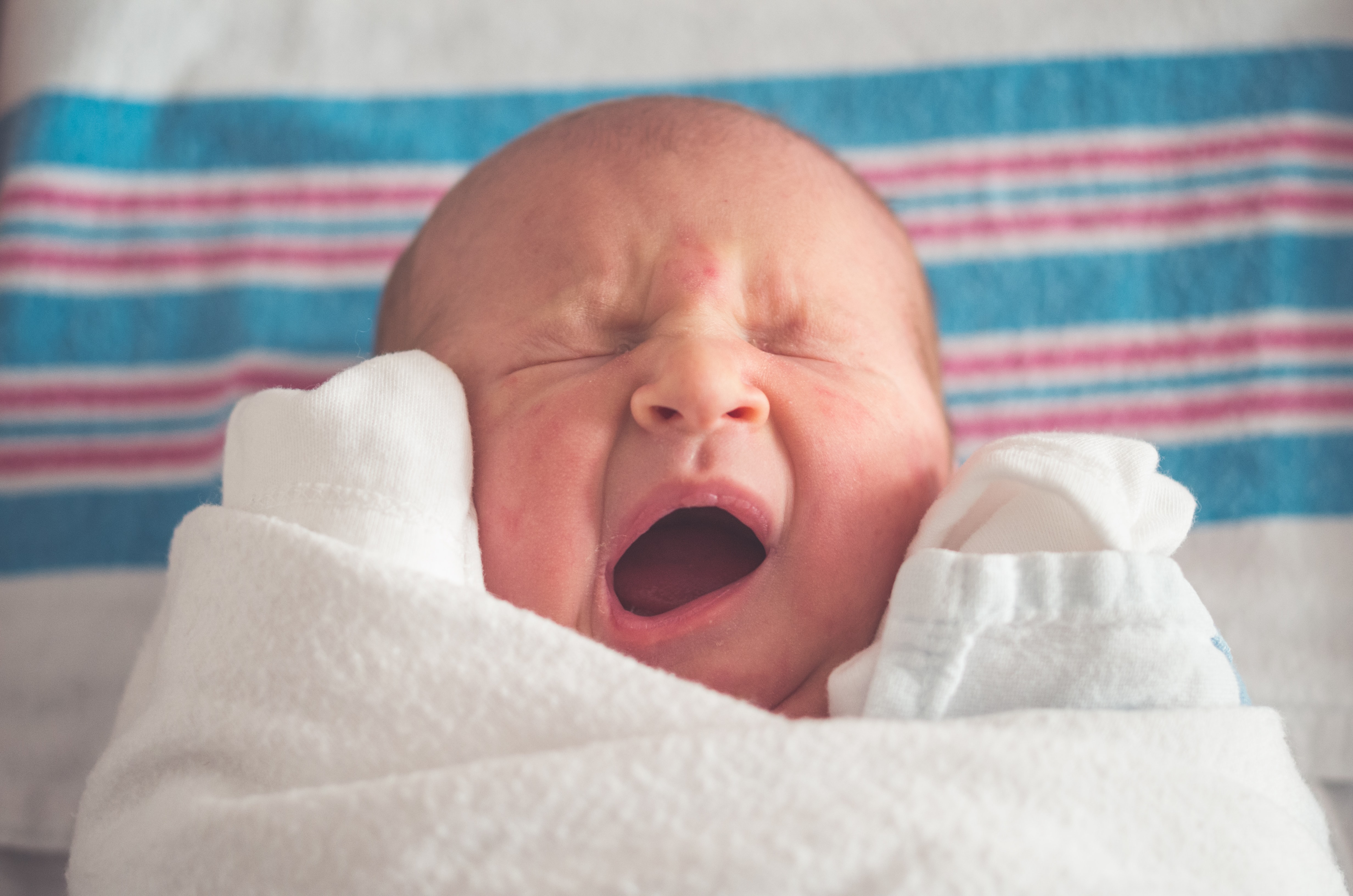
Burping or Gas
Your baby has a few different cries, and being able to differentiate between the various cries will help you better be able to tend to your baby’s needs. One of the cries your baby might make is “eh”, which means he/she may need to be burped. The distress he/she is feeling is caused by a large bubble of air trapped in the chest, and so your baby makes this “eh” sound to try to release the trapped air. Other signs that your baby may need to be burped includes a pained facial expression, kicking feet, shaking arms and squirming. Alternatively, your baby may also turn away when you offer the other breast or the bottle.
Similarly, an “eairh” sound may indicate lower wind or gas, when trapped air from a burp can’t be released and travels to the stomach. The intestinal muscles tighten to force the air bubbles out, and may also indicate a bowel movement is in progress. Following this, your baby may cry loudly, intensely and rhythmically, until the wind has passed. Additionally, your baby may raise his/her legs to his/her tummy, and be fidgety. Raising his/her knees and bringing his/her legs towards the torso helps the bowel movement along.
Discomfort
When your baby is uncomfortable, meaning he/she is hot, cold or wet, he/she may make the sound “heh”. Such a sound indicates a skin reflex, or having a sweaty or itchy feeling. The crying is usually mild and intermittent, but may increase in volume if you don’t attend to your baby quickly and help ease their discomfort.
Hunger
For hunger, the cries may sound like “neh”, where your baby’s sucking reflex is triggered and his/her tongue is pushed up to the roof of the mouth. Other indications your baby may be hungry is that he/she may try to gnaw or suck at his/her hand, or reach towards the general area of your chest. Do give your baby attention as soon as possible so they can be soothed and settled sooner. Typically, try to get to your child before he/she cries out of hunger as this can help with latching.
Additionally, your newborn may need to feed about eight to 12 times a day, or feeding every two to three hours. Do note that your baby doesn’t necessarily feed on a schedule, so feed when your baby is hungry without regarding the clock.
Some indications that your baby is resting from feeding – are when your baby ceases suckling, closes his/her mouth, or turns away from your nipple or bottle. You can try burping your baby or waiting a minute or so before trying to feed your baby again.
Tiredness
Finally, they might make the sound “owh”, which is similar to a yawn. Your baby may also show indications of tiredness by rubbing their eyes. When he/she cries, it starts out slow and low, and then builds in tone and intensity, and may resemble the hunger cry.
Massage
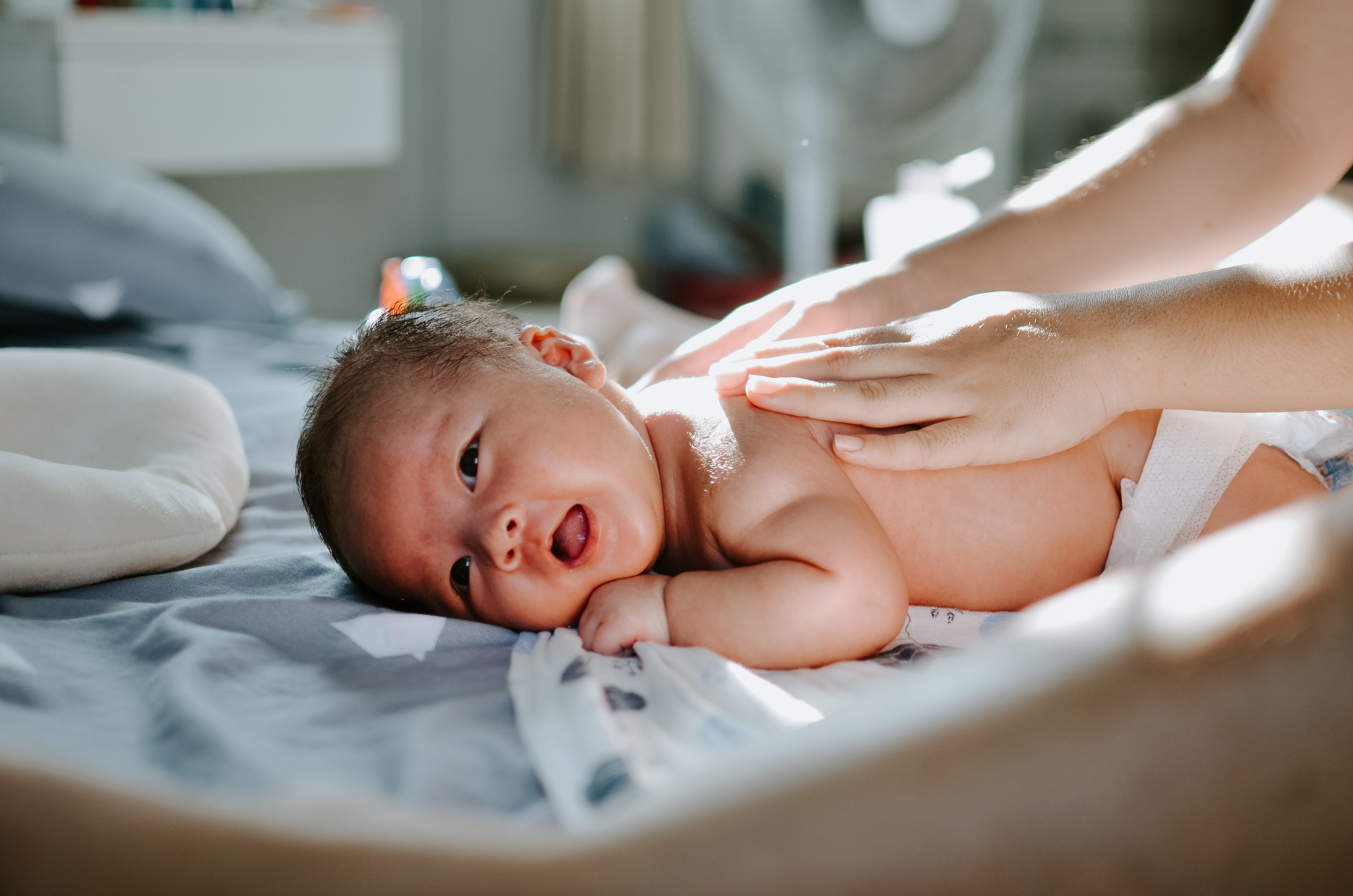
Benefits of Massaging Your Baby
Learning to massage your baby on your own can have several benefits, such as bonding and secure attachment during this 15-minute session, which showers your baby with undivided attention. This helps babies foster healthy relationships with their partners and friends when they grow up. Additionally, this creates a safe environment for your baby, who can see and smell you, hear your voice and feel your touch.
Another benefit is that it promotes oxytocin, the happiness hormone for both your baby and yourself, and for mummies this has an added bonus of improving your milk supply. Additionally, massaging your baby can help accelerate his/her development, as physical touch stimulates the various muscles and the nervous system.
How to Massage Your Baby
To massage your baby, use natural cold pressed non-scented oils like olive oil or almond oil as your baby is likely to put the oil in his/her mouth. Use firm but gentle pressure, equal to the pressure you’d put on your eyeballs before you feel pain. Keep the temperature between 24 to 26°C before removing your child’s clothing for the massage. Parents should keep themselves relaxed as well before starting the massage as your baby can pick up on your stresses.
A gentle massage includes massaging the stomach. Rub the oil onto your hands and let your baby know you’re starting the massage. Start with rubbing your baby’s stomach from the top to the bottom, and then repeating the movement, followed by a circular clockwise movement. Next is the “I love you” motion, starting by bringing your fingers downwards on the left side of your baby’s body, then walking the pads of your fingers from the right to the left of his/her stomach, and finishing with both thumbs starting from the navel and working your way outwards. You can start with three to six repetitions.
See how Yan Ping massages her baby on IG Live here (22:46 onwards). Learn how to massage your baby with Lim Yan Ping, founder of Physio+ and certified Infant Massage Instructor with the International Association of Infant Massage (IAIM). Sessions are on every Tuesday in August, and you’ll need to commit to all four sessions above. Only four slots are available, as classes will be held at Motherswork, Great World City, from 10 – 11am.
Sleeping
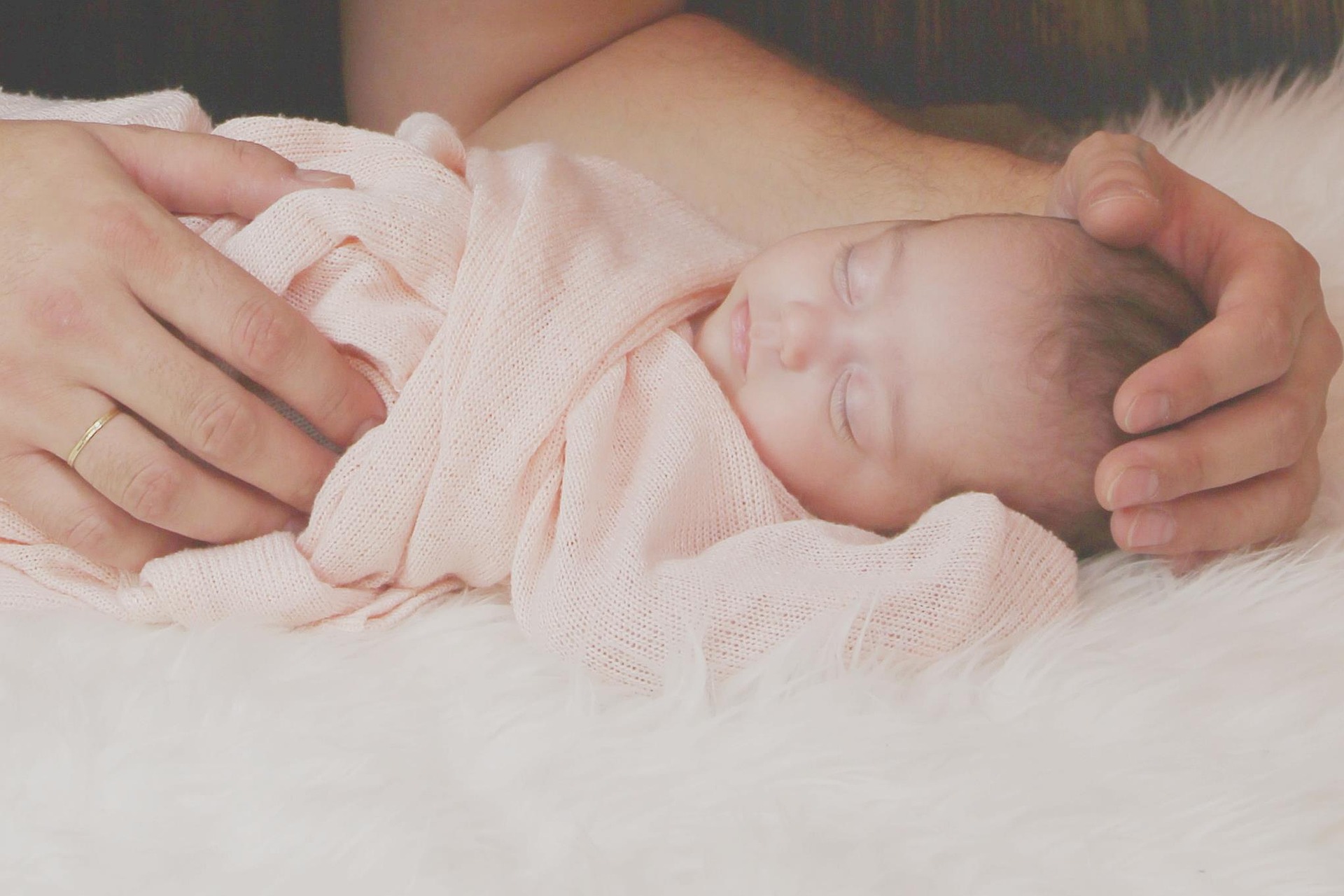
Generally, newborns will sleep a total of eight to nine hours in the day and about eight hours at night. Of course, this will be interrupted by feeding them every couple of hours. Don’t be worried if your baby doesn’t sleep through the night – some babies only manage this closer to one year. However, if you notice baby’s sleep patterns changing, it might signify a problem – or just a growth spurt, changes in development or due to overstimulation.
When they wake up, they may first be very still, but awake and taking in their surroundings, before proceeding to the crying phase. Calm your baby by holding him/her close or wrapping your baby in a blanket. Aim to feed babies before they start crying, as it may be harder to feed your newborn when they’re crying.
Sleeping Tips
Signs your baby is ready to sleep include rubbing his/her eyes, yawning, looking away or fussing. If your baby is overtired, bring him/her to a quiet place, and use pacifiers or security blankets if needed. Try to stick to a consistent routine, which may be as simple as swaddling your baby and rocking him/her. As your baby grows, you may need to modify the routine, and include other elements, like a warm bath, getting cleaned up and changed, cuddling, and story time.
Preferably, your baby’s sleeping space should have dim lighting, and you can use a white noise machine if necessary. Should they wake up mid-nap, pat them back to sleep. Other tips include strategic diaper changes, preferably before you feed them. In the middle of the night, turn on just a night light to change your baby. If you yourself are cranky and tired, it may be better to pass your baby to someone else, as he/she can pick on your emotions. Where necessary, you may also need to get a few sleep aids to help your baby sleep better.
Swaddling
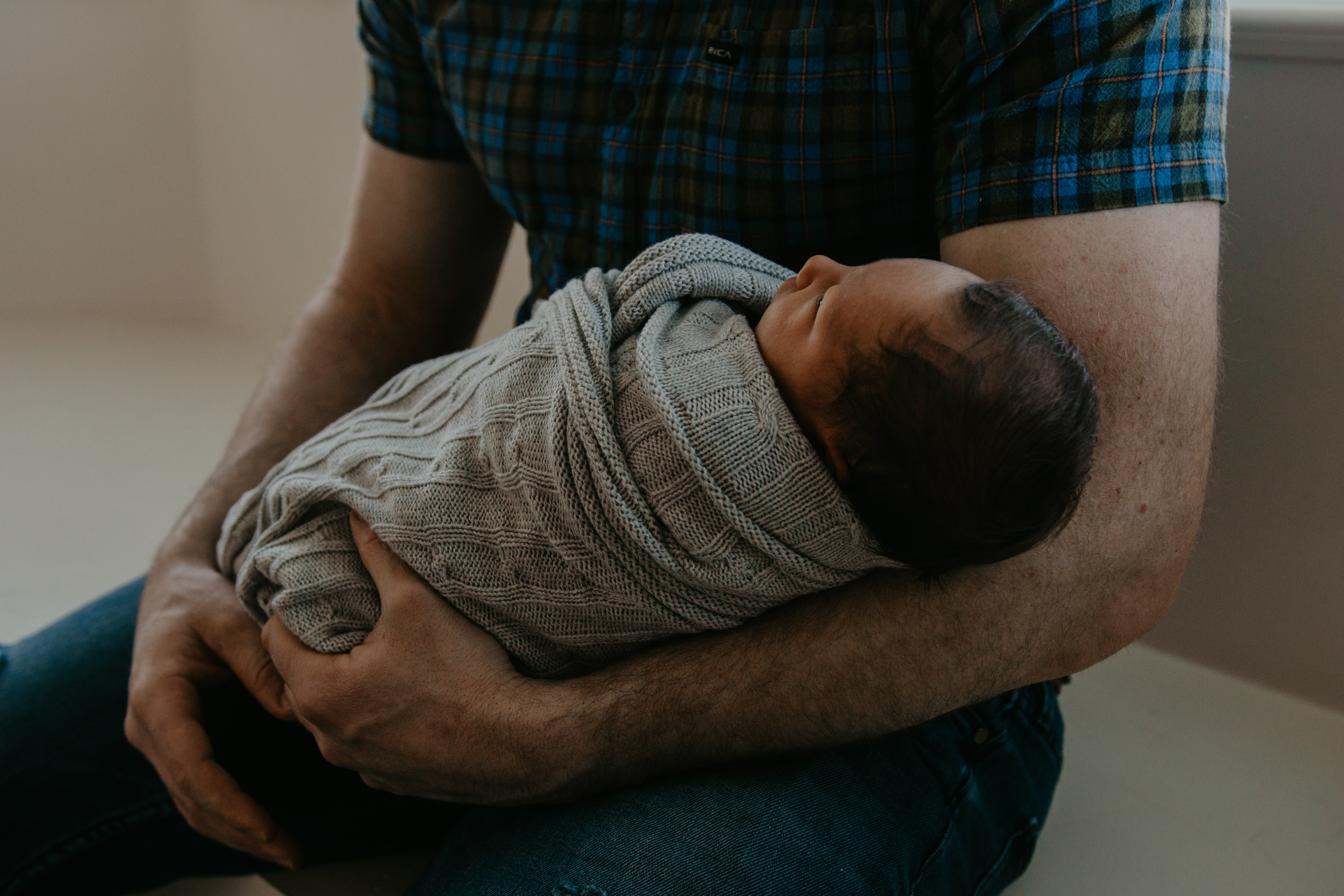
Learn how to correctly swaddle your baby, which can help calm him/her and promote sleep. First, spread the blanket out flat, folding down a corner. Next, place the baby face-up on the blanket, head above the folded corner. Straighten his/her left arm, and then wrap the left corner of the blanket to tuck between her right arm and the right side of his/her body. After this, tuck the right arm down, folding the right corner of the blanket over your baby’s body and under the left side. Loosely fold or twist the blanket’s bottom and tuck it under one side. Your baby should still be able to move his/her hips, and get two or three fingers between the baby’s chest and the swaddle.
Once your baby is two months old, or can roll over on his/her own, stop swaddling your baby as it may increase the risk of sudden infant death syndrome should the swaddled baby roll onto his/her stomach. To suit Singapore’s climate, use a lighter blanket or sheet, and a warmer option if your baby is in an air-conditioned room.
Umbilical Care
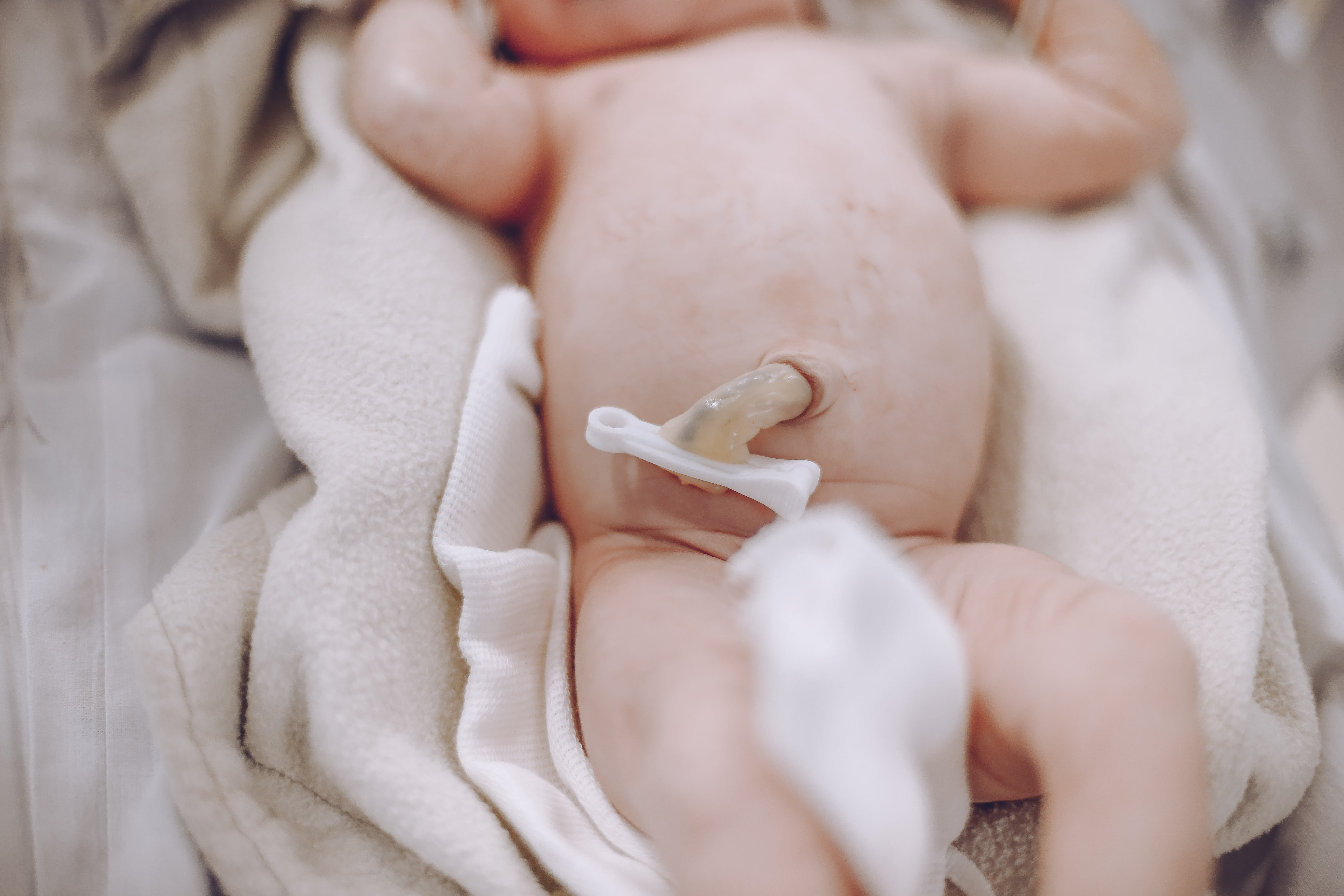
When the cord stump falls off in seven to 14 days, there may be a small amount of blood or wetness. While your newborn’s cord is still intact, keep it clean and dry so that it will fall off sooner. If it’s soiled with urine or stool, clean around the base thrice a day with a cotton swab dipped in alcohol. Additionally, avoid giving your baby a tub bath until the cord falls off, and roll the diaper as low as possible to prevent the diaper from hitting the cord when your baby kicks.
Do call your baby’s paediatrician if you notice a bad smell, redness, yellow or greenish discharge, bleeding or a soft or moist cord.
When Baby is Sick
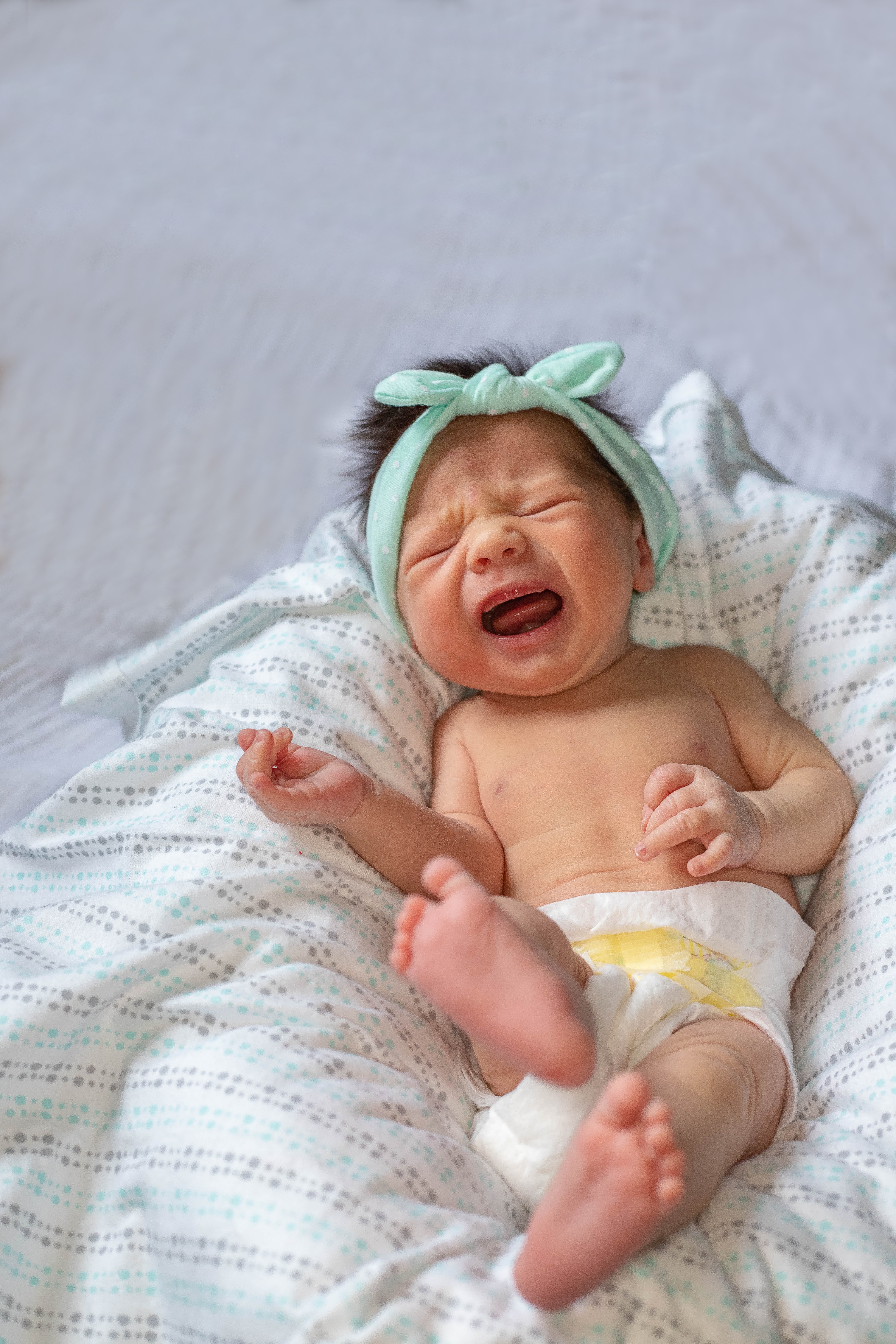
Catching a Cold
Although all babies have some immunity to illness, it takes a while for their immune systems to mature, and they may get colds. Breastfed babies may have more immunity than formula-fed babies because of the antibodies in breast milk. Definitely call your paediatrician if he/she is sick between two to three months old, especially if he/she has a fever. One of the symptoms of your newborn catching a cold is a stuffed or runny nose. His/her nasal discharge may first be thin and clear, then turn yellow-green and thicker over the next few days. Other symptoms may include being fussy, having a fever, coughing, sneezing, having a reduced appetite. Along with these symptoms are difficulty breastfeeding or taking a bottle and falling or staying asleep.
Other Illnesses
Making this more worrisome is that these symptoms may be similar to the flu, croup and pneumonia, thus it may be more difficult to diagnose what your newborn has. As a guide, if your baby has the flu, the cold symptoms will be accompanied by chills, vomiting, and diarrhoea. If your baby’s skin is flushed and he/she is sweating, with a high fever, shakes and chills, as well as a cough that worsens over time, with difficulty breathing or abdominal pain, he/she may have pneumonia. Should your baby have difficulty breathing, hoarseness, make squeaking breathing sounds like wheezing and a barking cough, his/her cough has become croup.
As your baby’s airways are not fully developed, another serious respiratory infection your newborn might have is respiratory syncytial virus (RSV), with faster-than-normal or having difficulty breathing. Some other symptoms include cough, fever, lethargy, a runny nose, sneezing or using their chest muscles to breathe in a laboured way. This may also cause viral bronchiolitis, which affects the smallest air passages in the lungs.
Treatment
Definitely see a doctor if he/she has a cold, so that you can seek treatment quickly. Aside from administering the medicine the doctor will give, you can also ensure they’re hydrated with formula or breast milk. Next, suction out nasal mucus using saline drops and a suction bulb. Additionally, keep the air moisturised with a humidifier.
Avoid giving your baby antibiotics, over-the-counter fever reducers, aspirin or cough and cold medications. Additionally, don’t use vapor rubs, and ensure that your baby always sleeps on his/her back.
Take care of baby: Thermometers and nasal aspirator
Relevant Reads: Keeping the air around baby safe, 5 Most Common Paediatric Conditions, and Organic Baby Clothes and Linens
This article was originally from Motherswork.



